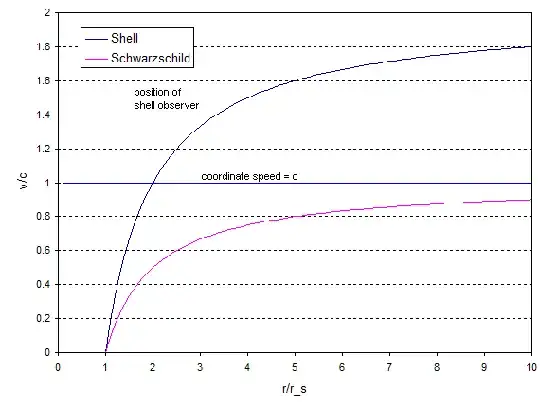As I understood we were not able but then i read John Rennie's question and answer here:
Does light really travel more slowly near a massive body?
And got me a little bit curious.
He says:
We can extend our analysis to find the speed of light in the shell coordinates at radial distances greater and less than the shell distance. The argument is essentially the same as above so I’ll just give the result:
$$ \frac{dr’}{dt’} = \pm c \frac{1- r_s/r}{1 – r_s/R} \tag{4} $$
And this looks like (for $R = 2r_s$):
Like the Schwarzschild observer the shell observer sees the coordinate speed of light fall when the light is closer to the massive object than they are, but the shell observer sees the light move faster than $c$ when the light is farther from the object than they are.
Question:
- Is it really possible to construct an experiment where we would measure the speed of light faster then c?
